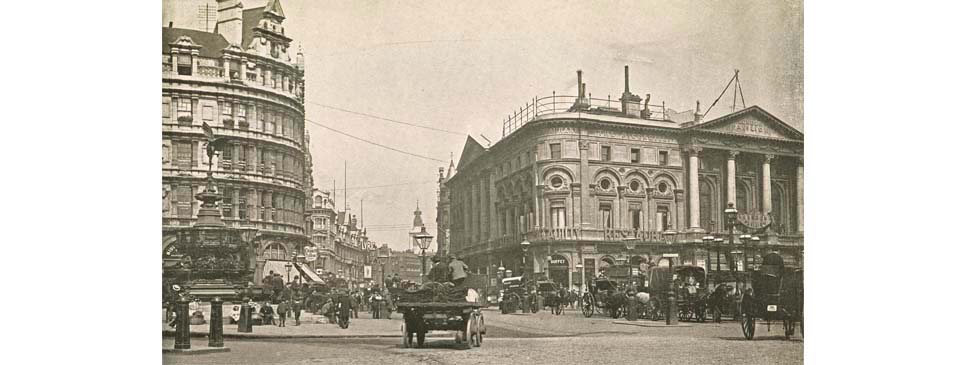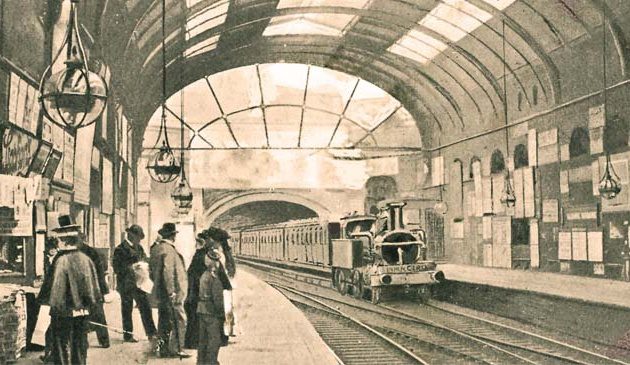In brief – Late-Victorian London

Piccadilly Circus at the end of the 19th century. We see along Shaftesbury Avenue, which was laid out in 1886 from here to Cambridge Circus and on to New Oxford Street. At the same time, the former London Pavilion music hall, seen on the right, was rebuilt and enlarged as a grand variety theatre. On the left is the Shaftesbury Memorial Fountain, erected in 1892-3 and topped by Anteros, but normally mistakenly known as ‘Eros’. Both the fountain and street are named after the philanthropist, the 7th Earl of Shaftesbury.
From the 1840s publishers moved east from the Strand into Fleet Street and during the following decades constructed purpose-built offices and printing-works as they expanded their businesses. The importance of Fleet Street to the newspaper industry was cemented from 1870 when the Press Association opened its office there.
The growth in literacy in the latter part of the century expanded the market for newspapers and books. Londoners came to enjoy novels by a number of writers who lived in or based their work in London, including Charles Dickens. The philanthropists John Passmore Edwards and Andrew Carnegie established book lending libraries for London’s working classes and from the 1880s local vestries followed suit.
As London modernized, a number of significant buildings were opened. With a growing empire and civil service, grand new government offices were created on Whitehall in the 1860s and 1870s, notably the Foreign & India Office and Colonial & Home Office. The civil law courts moved out of their ancient home at Westminster to the new Royal Courts of Justice in the Strand, opening in 1882.
Several Thames bridges were constructed or rebuilt during this period. Lambeth Bridge opened between Millbank and Lambeth in 1862 to replace the ancient horse-ferry. Both the original Westminster and Blackfriars bridges had to be replaced, opening in 1862 and 1869 respectively. Albert Bridge and Wandsworth Bridge both opened in 1873 and Fulham Bridge was replaced in 1886 by what was thereafter called Putney Bridge. There had long been the need for new crossing points downriver of London Bridge but there was the problem of the large ships that had to pass. The problem was solved by the opening of the Woolwich Ferry in 1889, the bascule Tower Bridge in 1894 and the Blackwall Tunnel in 1897.
Queen Victoria died in January 1901 bringing to an end an extraordinary period in London’s – and Britain’s – history. The Victorian era had brought about great change in London. Trade with the Empire and the rest of the world through the docks had increased, new technology and engineering processes had occurred, trains allowed increased mobility, and electricity had brought many new inventions. London was then the largest and most populous city in the world. Much of it had been rebuilt during the 19th century and many of the middle classes had moved to the suburbs. The City of London was by the end of the century largely a district of financial commerce, although some manufacturing remained. Many people had been excluded from the capital’s wealth, being unemployed or underemployed and living in slums. That itself had brought about some change, with slum clearances, improved education and welfare, and the first affordable housing for workers.
< Go back to In Brief: London during the mid-19th century or forward to In Brief: Early 20th century >


